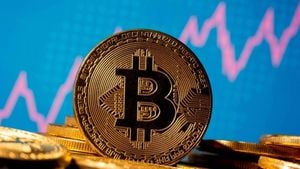Amidst the myriad challenges confronting the global economy today, including pandemic-induced shifts, geopolitical tensions, and climate change, the quest for sustainable economic growth is taking center stage. A recent study from Carnegie Mellon University sheds light on this pressing issue, advocating for new frameworks to measure economic sustainability more accurately. With fossil fuel dependence under scrutiny and environmental degradation at the forefront of public consciousness, the paradigm for economic growth clearly requires fundamental rethinking.
The study highlights the necessity for integrated assessments of sustainable growth, emphasizing the need to track both man-made and natural capital. The researchers assert, "as society adjusts to emergent risks, it does so with an unprecedented emphasis on sustainability." They suggest adopting definitions of growth rooted not solely in GDP figures but also accountability for the environmental costs tied to economic activity.
To provide some background, natural capital comprises the world’s stocks of natural assets, including geology, soil, air, water, and all living things. The researchers found substantial evidence linking economic health to the health of these natural systems. They built their framework around two major pollutants: particulate matter, particularly fine particulate matter known as PM2.5, and carbon dioxide emissions.
Using data stretching from 1998 to 2018, the study tracked the monetary damages of these pollutants across 165 countries, calculating what they termed gross external damage (GED) from the emissions. This approach seeks to quantify the often-overlooked cost of pollution on human health and the environment, enabling policymakers to take informed actions concerning economic growth strategies.
Nicholas Muller, co-author of the research and professor at Carnegie Mellon, explained the importance of incorporating this comprehensive framework. Traditional metrics of economic progress, he pointed out, fail to capture the long-term environmental costs of growth. They merely record production outputs, often overlooking the health and ecological impacts stemming from hazardous emissions. "These tools are incomplete, curtailing policymakers' ability to measure and achieve sustainable growth," he commented.
This perspective is particularly relevant against the backdrop of the Biden administration's global development agenda, which has met with both optimism and skepticism. Released late last year, the U.S. Strategy on Global Development sets forth ambitious goals rooted in five primary pillars, including commitments to economic growth through inclusivity and sustainability.
The first pillar outlines efforts to reduce poverty through sustainable economic measures, supporting infrastructure development, and enhancing health and human capital. This plan reflects the administration's acknowledgment of the interconnectedness of environmental sustainability and economic resilience. Yet, as we assess the efficacy of these intentions, one must confront the harsh realities posed by political upheavals and the unpredictable nature of economic policies under future administrations.
Often overshadowed are practical initiatives like the Nairobi-Washington Vision, which emphasizes shared development finance perspectives and debt relief—an urgent necessity for nations crippled by unsustainable debt loads. The plan’s success hinges on conjoined efforts from both American lawmakers and their international counterparts.
The proposed multilateral development bank reforms aim to realign institutions toward climate-responsive initiatives and responsive infrastructure funding; this is where the realignment of priorities can tangibly impact the outcomes for developing countries wrestling with poverty and environmental hazards.
While thoughtful indicators for sustainable growth are centers of discussion, the stark reality remains: many economic gains have come at the detriment of environmental integrity. Aniruddh Mohan, another co-author of the study, put it aptly as he noted the increasing likelihood of rising economic damages from emissions, particularly as nations strive to return to pre-pandemic growth levels.
While crafting these new frameworks and strategies is fundamental to steering global economies toward sustainable futures, they must go hand-in-hand with public and political buy-in. The concerns about climate change and its impending threats are palpable, and there remains significant public morale around fostering healthy economies without sacrificing the environment. How will future administrations continue these initiatives and avoid falling prey to reverting policies focused solely on immediate economic gains?
It’s apparent the advancement of global economic health lies not just within increasing GDP but also necessitates dialogues on environmental sustainability and ethical governance. Only through active investment and policy frameworks oriented toward immediate and long-term sustainability will global economies truly thrive.
Therefore, with the upcoming elections and potential shifts in political landscapes, the pressing question remains: Will future leadership heed these findings and embrace sustainable practices, or will economic ambitions revert to shortsighted measures?



